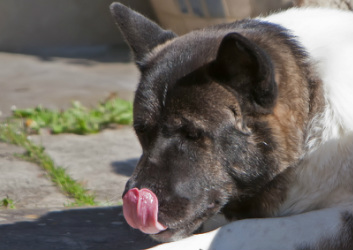|
Although most dog attacks are reported to have happened without warning this is generally not the case in reality. The majority of dogs are actually very good at giving warning signals before using aggression, it’s just we as humans are not very good at noticing them. The sequence of behaviours that typically occur before a bite can be thought of as a ladder (Shepherd, 2002). At the bottom rung subtle behaviour signals are used to show the dog’s initial discomfort. Dogs then progress up the ladder displaying more obvious signs of aggressive intent, fear and or frustration, until they reach the top rung where a bite occurs. Not all dogs display all the behaviours on the ladder but knowledge of these signals allows adults to recognise times when dogs may be uncomfortable. Some of the stages of aggression can happen very quickly particularly the latter stages and in addition some stages can be skipped entirely. Therefore all interactions between children and dogs should be monitored to prevent interactions escalating to a point where a bite could occur. Children should move away from dogs at the first signs of discomfort i.e. when the dog is performing behavious on the bottom rung of the ladder or if any of the behaviours on the ladder are observed. Teaching children to recognise the behaviour signals of dogs that are fearful or uncomfortable also allows children to feel more confident around dogs and make better decisions when interacting with dogs. Lip Licking & Yawning - Frequent indicators of psychological discomfort in dogs within a number of situations
Comments are closed.
|
AuthorTamsin Peachey is a Clinical Animal Behaviourist living in Hurley, Atherstone. Tamsin is passionate about dog safety and debunking the current myths surrounding animal behaviour training. Archives
January 2018
Categories |


 RSS Feed
RSS Feed
